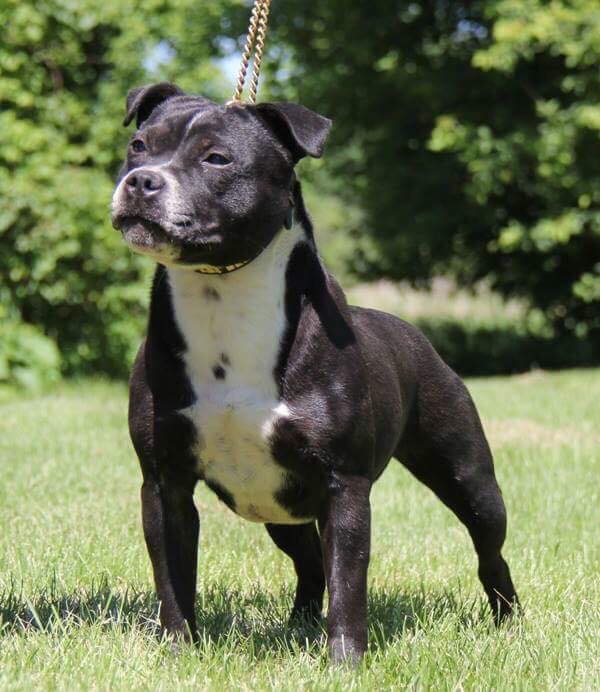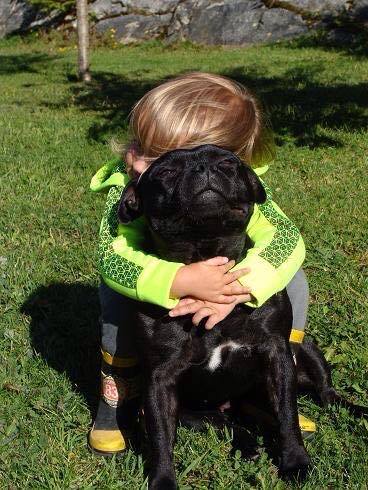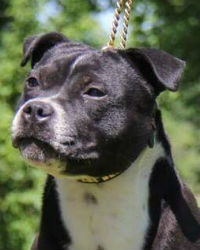History and Origin: The Staffordshire bull terrier is a big dog in a small package. The Staffordshire bull terrier history began in the back country of England and was a popular breed of dog with the coalminers at the turn of the twentieth century. A foremost all purpose dog, the breed was a blend of the Bulldog for their tenacity and old Black and Tan Terrier for their athletic ability. They were designed to fight each other in the pit. More importantly the SBT had to be a totally reliable and trust worthy family member.
General Appearance: Strong and muscular, solidly built: Generally, the SBT is a very healthy breed. Occasional allergy issues can occur and diet is an important factor. Breeders have done a great job in health testing. We have DNA tests for Juvenile Hereditary Cataracts and L2HG, a metabolic disorder. Many breeders do further testing for their own knowledge to assist them in making informed breeding choices to keep the health integrity of the breed. The SBT lifespan is generally 12-15 year
Height and Weight: 14-16” 28-38 lbs
Coat and Colour: This is a short coated breed. Acceptable colours are red, fawn, white, black or blue, or any of these colours with white. Any shade of brindle with or without white.
Feeding: The SBT does exceptionally well on a balanced raw diet or high end kibble.
Temperament: The SBT’s happy go lucky nature coupled with their sensitivity makes them an extremely trainable breed. They are generally a quiet breed and don’t bark much even when people come to the door. This breed has never met at stranger that they don’t love, but don’t let that fool you; they will give their life to protect their family from a threat. Their number one priority in life is to please their people. They do tend to “talk” to people when they are happy or excited by making vocal rooing sounds. It is a very endearing trait. The SBT has a special affection towards children that is hard to describe until you experience it.
Training and Obedience: Crate training is a must with this breed as they are very inventive when bored and will renovate your house while you are not home. A fenced yard is important as this breed left unattended will follow anyone home, especially children. They require early socialization with other dogs and cats to learn healthy doggie manners and social skills. They do well in pairs or with other breeds that match their energy level.
Activity and Performance: The breed thrives on being given a job whether its obedience, agility, or other dog sports or just doing tricks for the family. They love to entertain, and are up for any activity that you throw at them. They enjoy water if introduced to it at an early age as they don’t tend to be natural swimmers. They tend to play hard with other dogs and don’t understand their own strength. Generally they will not start an altercation but are always up to the challenge if another dog were to start something. Therefore off leash parks are never a good idea with this breed. They love all outdoor activities but because of their shorter muzzle, they can be more heat sensitive.



